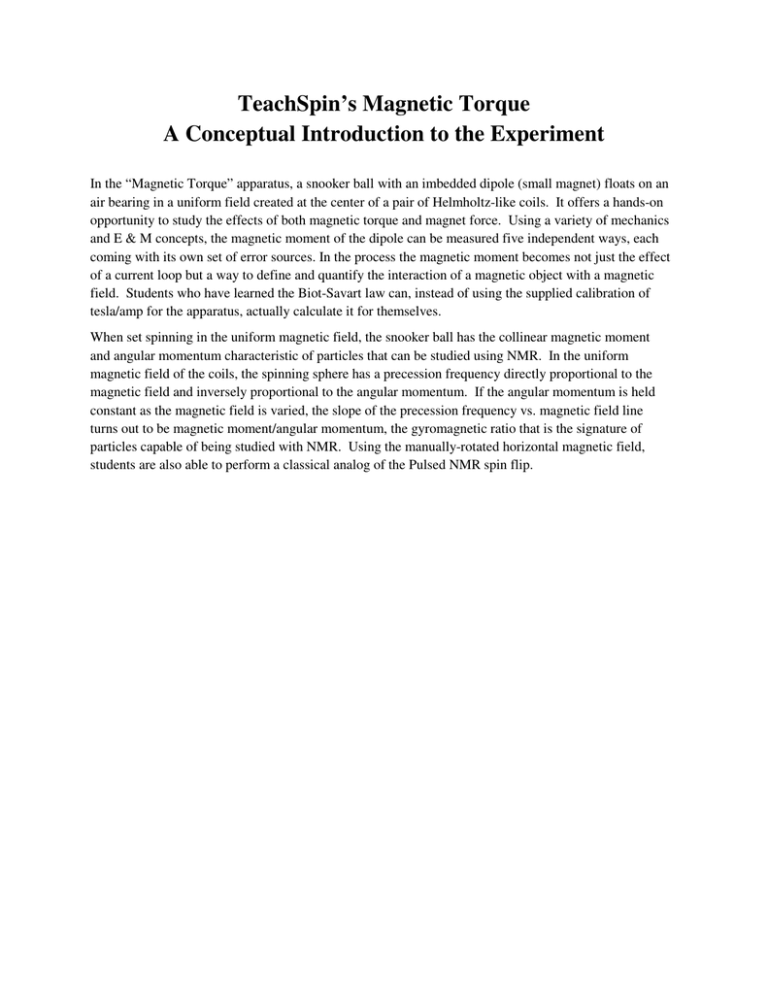TeachSpin`s Magnetic Torque A Conceptual Introduction to the
advertisement

TeachSpin’s Magnetic Torque A Conceptual Introduction to the Experiment In the “Magnetic Torque” apparatus, a snooker ball with an imbedded dipole (small magnet) floats on an air bearing in a uniform field created at the center of a pair of Helmholtz-like coils. It offers a hands-on opportunity to study the effects of both magnetic torque and magnet force. Using a variety of mechanics and E & M concepts, the magnetic moment of the dipole can be measured five independent ways, each coming with its own set of error sources. In the process the magnetic moment becomes not just the effect of a current loop but a way to define and quantify the interaction of a magnetic object with a magnetic field. Students who have learned the Biot-Savart law can, instead of using the supplied calibration of tesla/amp for the apparatus, actually calculate it for themselves. When set spinning in the uniform magnetic field, the snooker ball has the collinear magnetic moment and angular momentum characteristic of particles that can be studied using NMR. In the uniform magnetic field of the coils, the spinning sphere has a precession frequency directly proportional to the magnetic field and inversely proportional to the angular momentum. If the angular momentum is held constant as the magnetic field is varied, the slope of the precession frequency vs. magnetic field line turns out to be magnetic moment/angular momentum, the gyromagnetic ratio that is the signature of particles capable of being studied with NMR. Using the manually-rotated horizontal magnetic field, students are also able to perform a classical analog of the Pulsed NMR spin flip.

